You already know that rest days are an important part of your workout schedule, but what happens to your muscles during downtime – and how can you help them recover faster?
By Eve Boggenpoel
Whether it’s recovering from a tough workout, coping with delayed onset muscle soreness or managing a return to training after a minor injury, knowing how your body responds to exercise can help you reach your fitness goals more easily.
Why do my muscles hurt after a workout?
So, first things first, what exactly happens to your muscles when you work out? ‘Strength training puts muscle tissue under stress. This causes microtears in the fibres,’ explains Maria Eleftheriou, head of barre at Psycle.
‘Your body repairs the tears by fusing the fibres together and increasing the size and quality of the muscle.’ To boost your chances of recovery, understanding the physiology of muscle healing can be really helpful.
‘Firstly, inflammation and muscle degeneration occurs. Next, calcium breaks down damaged muscle fibres. Then, inflammatory cells release pro-inflammatory molecules in order to kickstart the removal of cell debris,’ explains Tom Corradine, physiotherapist at Ten Health & Fitness.
‘Then, adult muscle stem cells generate fibroblasts. These help repair the muscle fibre. Finally, remodelling takes place.’
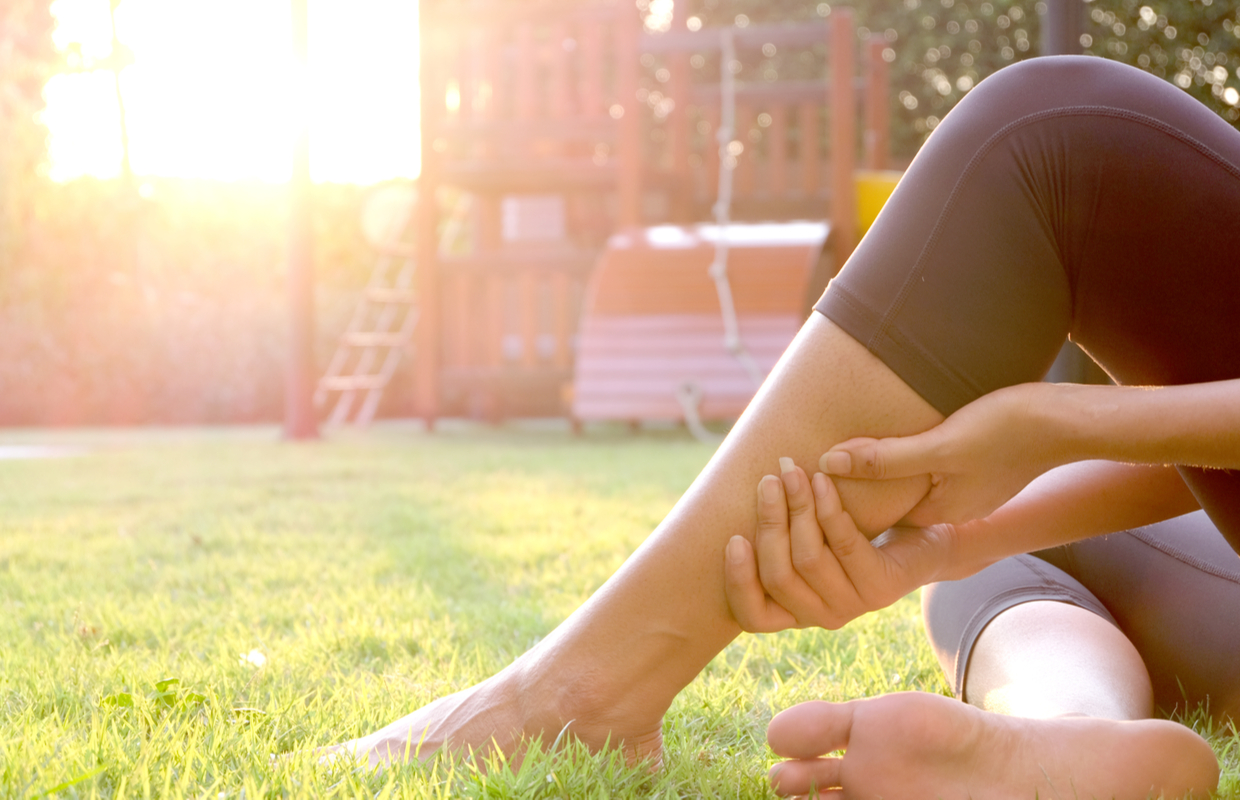
What is DOMS?
One of the most obvious signs recovery is taking place is delayed onset muscle soreness, or DOMS. You’re probably already familiar with tender muscles in the days after a workout. This is sometimes accompanied by stiffness, swelling and decreased muscle strength.
These symptoms relate to the inflammation stage of muscle healing. Unfortunately for you, this also sensitises nerve endings and increases your perception of pain. It makes sense, then, that this is a time when you need to take extra care of your body.
‘As the inflammatory phase transitions into the regeneration phase, you should be fine doing simple range of motion exercises,’ advises Corradine. ‘However, we’d suggest not over-stretching or pushing into pain.’
There are several other strategies you can follow to help manage your recovery post workout. Accumulatively, these will maximise your chances of performing even better at your next training session.
Read on for the experts’ views on the best ways to bounce back after a tough workout…
8 ways to boost muscle recovery on rest days
Replenish glycogen on rest days
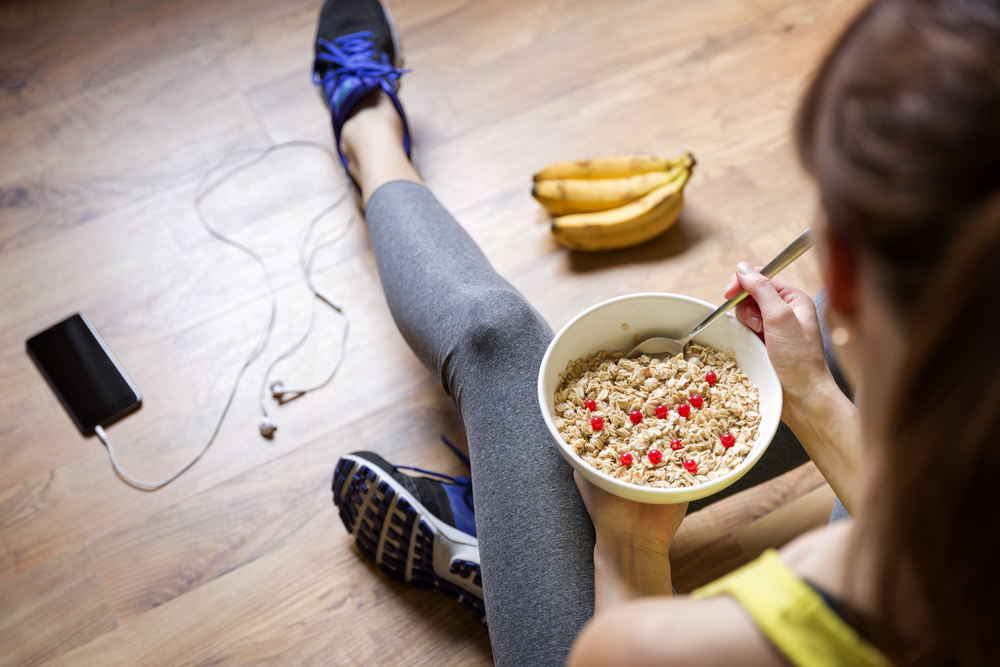 ‘You need to replenish glycogen, otherwise your muscles won’t be able to produce energy (adenosine triphosphate, aka ATP) quickly enough and your muscles will fatigue,’ says celebrity trainer Dan Roberts (@teamdanroberts).
‘You need to replenish glycogen, otherwise your muscles won’t be able to produce energy (adenosine triphosphate, aka ATP) quickly enough and your muscles will fatigue,’ says celebrity trainer Dan Roberts (@teamdanroberts).
‘I usually prescribe around 4-5g of carbohydrate per kg bodyweight for most women I train. If you’re training regularly, then eating 1g of protein per kilogram of bodyweight is a good rule of thumb (or 1.5kg if you’re doing heavy lifting and/or endurance training a few times a week). And magnesium citrate is an excellent supplement to take when training hard.’
Drink plenty of water to avoid dehydration
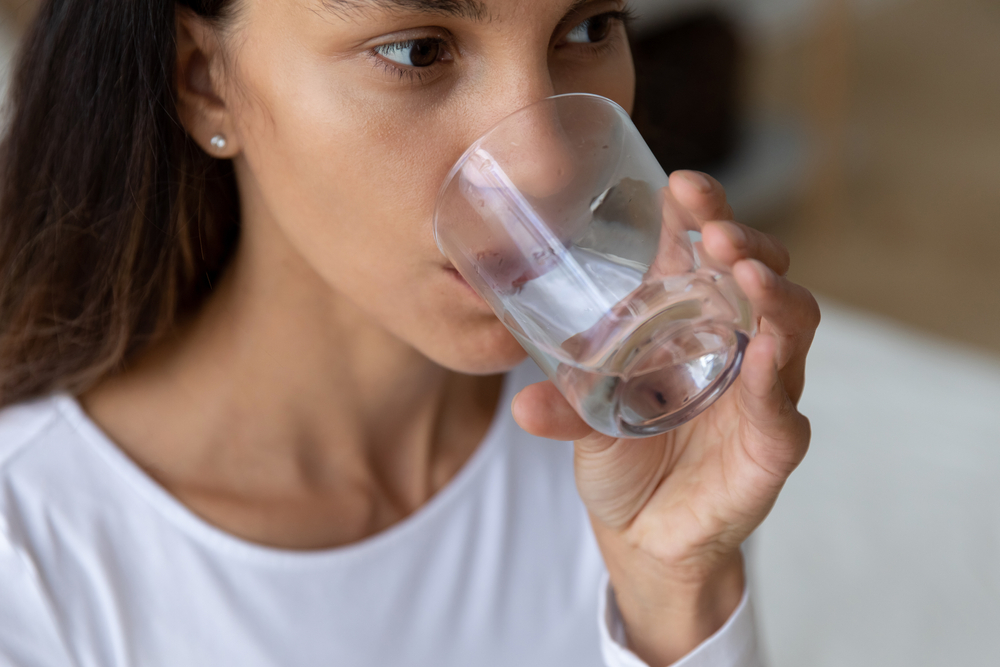 Rather than aiming to increase your hydration, you need to focus on avoiding dehydration, says Roberts. ‘… [researchers] agree even one per cent dehydration will reduce performance. This means your muscles and brain won’t work as efficiently,’ he explains.
Rather than aiming to increase your hydration, you need to focus on avoiding dehydration, says Roberts. ‘… [researchers] agree even one per cent dehydration will reduce performance. This means your muscles and brain won’t work as efficiently,’ he explains.
‘If you’re dehydrated by five percent of your mass, your maximum output has been shown to be lowered by a whopping 30 per cent.’ So what should you be drinking? ‘Most of the time, just water!’ believes Roberts.
‘But for longer training, sports drinks are useful,’ he adds. ‘Essentially water with carbs, salt and, usually, magnesium and potassium, all of these help your body (and brain) recover quicker.’
Get plenty of sleep to boost muscle recovery
 You might be sleeping at night, but your body is working hard to prepare you for your next workout. ‘When it comes to recovery, sleep is practically a training aid. During sleep your pituitary gland releases growth hormones that stimulate muscle repair and growth. This means it’s a time when you can adapt from the day’s training,’ says Dr Rebecca Robinson, consultant physician in sport and exercise medicine at CHHP.
You might be sleeping at night, but your body is working hard to prepare you for your next workout. ‘When it comes to recovery, sleep is practically a training aid. During sleep your pituitary gland releases growth hormones that stimulate muscle repair and growth. This means it’s a time when you can adapt from the day’s training,’ says Dr Rebecca Robinson, consultant physician in sport and exercise medicine at CHHP.
‘Sleep also regulates the stress hormone cortisol, so that it decreases at rest and rises when you need to be alert, active and performing under pressure.’
Know your hormones
 Your reproductive hormones also affect your ability to recover. ‘Oestrogen creates an an abolic environment, which supports tissue repair and muscle growth. In contrast, progesterone is quite a catabolic hormone and tries to support muscle breakdown,’ explains Dr Emma Rossco-founder of The WellHQ.
Your reproductive hormones also affect your ability to recover. ‘Oestrogen creates an an abolic environment, which supports tissue repair and muscle growth. In contrast, progesterone is quite a catabolic hormone and tries to support muscle breakdown,’ explains Dr Emma Rossco-founder of The WellHQ.
‘There’s good research that shows muscle recovery is quicker in the first half of your cycle (particularly in the second week) when oestrogen is high. This means you’ll be better able to do more strength or resistance sessions,’ she adds.
‘Oestrogen also affects growth hormone, which is really important if muscles have been damaged during exercise. It helps them repair and grow.’
Try cold water immersion for faster muscle recovery
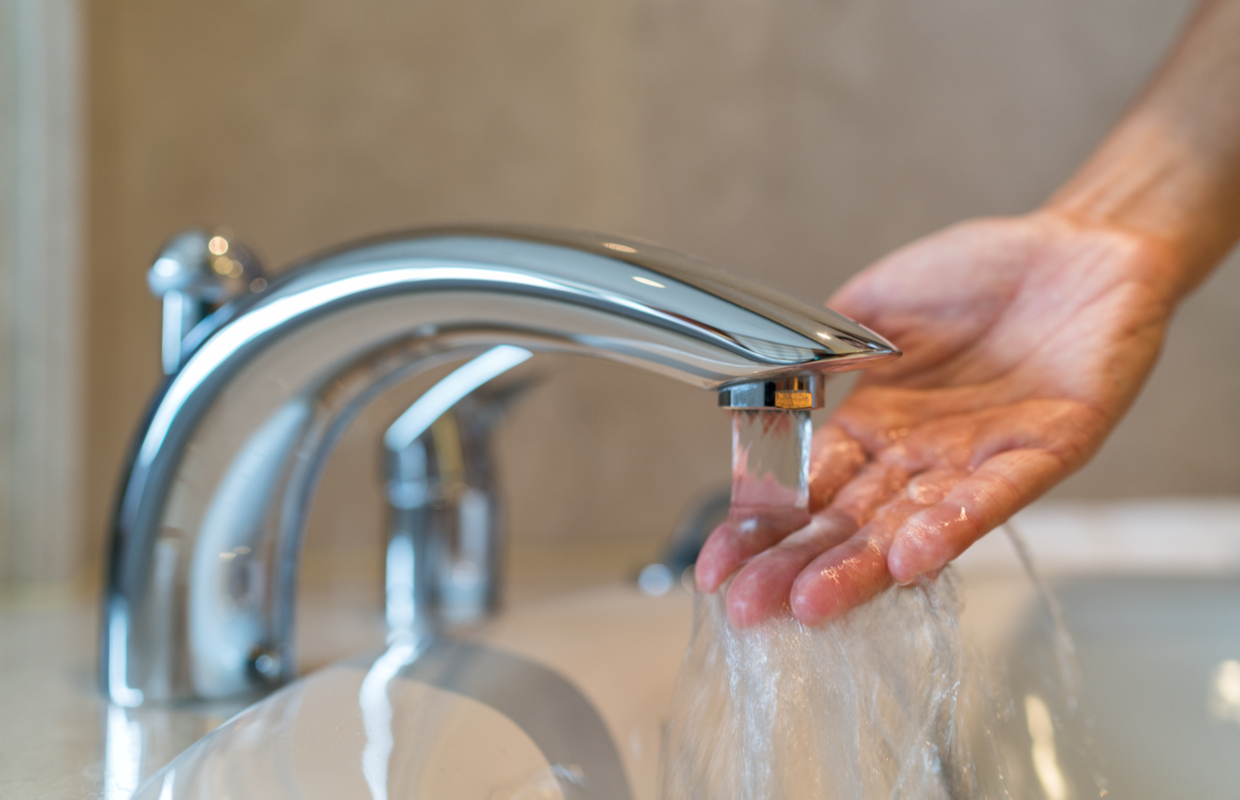 It wasn’t just high temperatures in Tokyo that got this year’s Olympians sitting in ice baths – when you’re training, cold-water immersion might also boost recovery.
It wasn’t just high temperatures in Tokyo that got this year’s Olympians sitting in ice baths – when you’re training, cold-water immersion might also boost recovery.
‘Local blood flow is sent deeper by the constriction of superficial blood vessels. When they dilate and reopen afterwards, this can help flush waste products,’ explains Dr Robinson. Some studies also show cold-water immersion can reduce inflammation in muscles. However, you need to proceed with caution.
‘Cooling might slow down the rate of protein-building, and we do need some inflammation in the normal healing response,’ adds Dr Robinson. ‘If you want to use cold-water strategies, this might be best if you have a planned period of super-setting hard training or sports events on consecutive days. It’s best to trial it out first.’
Try a massage gun to help your muscles recover
 We tested out the Homedics Pro Physio Massage Gun (£299), to see if it would speed up muscle recovery on rest days…
We tested out the Homedics Pro Physio Massage Gun (£299), to see if it would speed up muscle recovery on rest days…
‘This quiet, lightweight and cordless massage device has six interchangeable heads and three levels of intensity (from 2,100 to 3,000 rpm) so you can tailor your post-exercise recovery plan.
‘I found the lowest intensity quite enough for use after everyday training. The advice is to target each muscle for 15-30 seconds, but it was so relaxing, more than once I wanted to use it longer.
‘The self-heating head (heats up to 47°C in two seconds) was particularly effective on tight knotted muscles, and my skin maintained the heat for a surprising amount of time afterwards, while the cool gel head (simply place in the freezer for four hours) made my legs feel much lighter.
‘A handy chart outlines which attachment to use where, and the sturdy carry case makes it ideal for taking to the gym. Plus, it comes with a 30-day money-back guarantee!’
Try an infrared sauna blanket

We test out the MiHigh Infrared Sauna Blanket (£399)…
‘Because infrared heat penetrates your skin seven times more efficiently than regular heat, it increases your heartrate and blood flow quicker, helping flush out post-workout toxins.
‘On my first use, I trialled the mid-setting (temperatures range from a comfortable 25°C to seriously sweat-inducing 80°C) and found it super relaxing after a long day hunched over a desktop – my tight shoulders were completely relieved.
‘Contrary to some reports, the blanket isn’t claustrophobic at all and, ramping up the heat for use after workouts, on my second and third tests my muscles felt much less tight afterwards.
‘This, combined with the release of feel-good dopamine, oxytocin and serotonin, and I’m in danger of becoming quite addicted! If you are not convinced of the benefits, a free, 30-day trial lets you decide for yourself.’
What to do if you injure yourself:
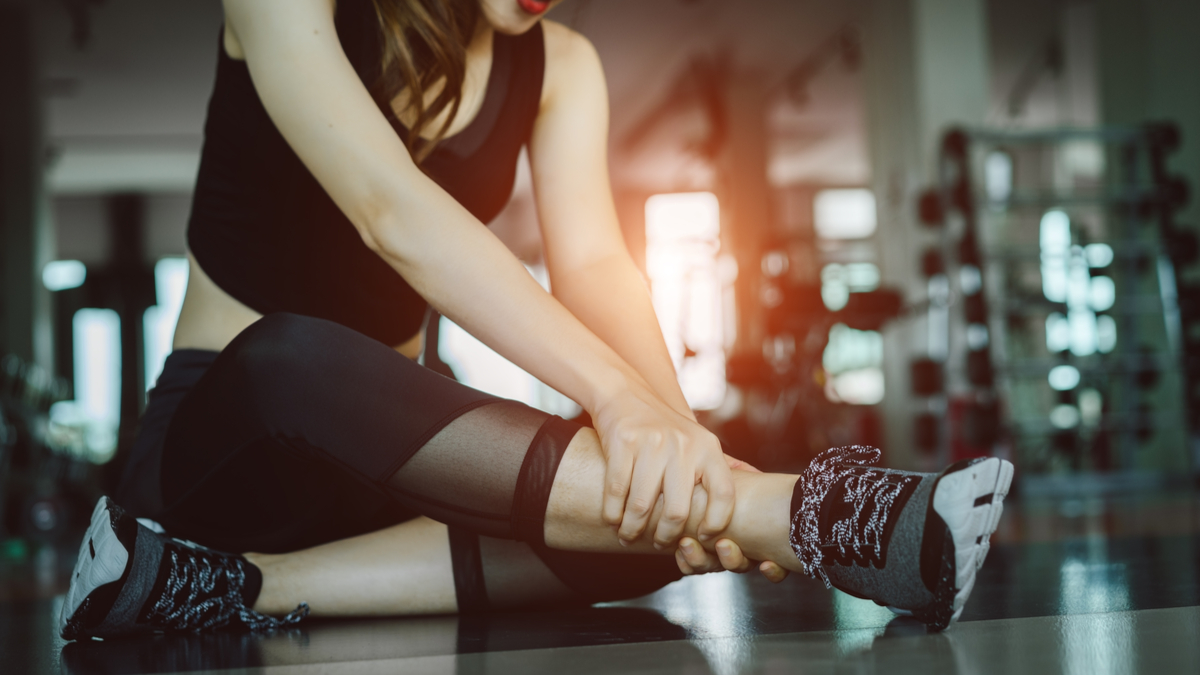
If you accidentally overdo things, or succumb to injury, Dr Ajai Seth, consultant in sport, exercise and rehabilitation medicine at London Bridge Hospital, suggests trying optimal loading.
‘You may need professional advice, but here’s a general rehabilitation formula I sometimes advise patients to progress through. Each stage needs to be carefully planned, and you shouldn’t move onto the next stage until completely ready.’
- Non-impact training (pool-based or on the Spin bike)
- Low-impact training (gym-based, lifting weights, cross-trainer, or rower)
- Impact training(jumping, hopping, sprinting)
- Return to full exercise/sporting events








